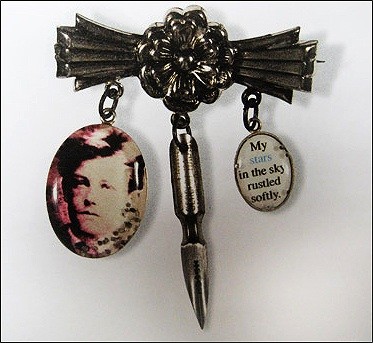Arthur Rimbaud: The Poet as Pop Star

Mon 5 Jul 2010

Graffiti portrait on a fence, blvd Raspail, 2009, by Pedrô.
Paris, the capital of la vie de bohème! The city where artists love and starve together, shock the bourgeoisie, then die tragically young. These myths were set in motion in 1843 by a magazine series called “Scenes from a Bohemian Life.” They were tales from a hard-up poet named Henri Murger that revealed his own daily struggles as well as those of his friends.Murger’s stories became a book as well as a hit play (one that later inspired Puccini’s opera La Bohème), and their popularity brought Paris a wave of would-be artists. By the mid-1800s students had flooded into the capital, each determined to become a “bohemian.” One of them, however, did more than outstrip Murger’s models—he completely redefined youthful decadence. This was Arthur Rimbaud, the subject of a trendy Marais exhibition, “Rimbaudmania: The Eternity of an Icon,” at the Galerie des Bibliothèques, in the Bibliothèque Historique de la Ville de Paris.
In 1871, at the age of 17, this well-schooled Catholic boy made a beeline for Paris. He was keen to reject both family and sobriety, and his search for urban experience led to stormy affairs (most notably with the poet Paul Verlaine, who left his wife and child for Rimbaud, whom he fought with and shot at). But despite his dissolute life, Rimbaud penned sentiments that caused no less than Victor Hugo to call him “an infant Shakespeare.” Rimbaud’s volumes The Drunken Boat, A Season in Hell and Illuminations endure as cornerstones of his bad-boy philosophy: art requires a “systematic derangement of the senses.”

Rimbaud mugs by CafePress.
At the age of 20 Rimbaud renounced writing forever. He spent the rest of his days traveling to Indonesia, Cyprus, Africa and the Middle East. By 37 his restless soul was gone—consumed by exotic locations, lovers of both sexes and adventures that included arms dealing.“Rimbaudmania” begins with a clutch of manuscripts, handwritten letters and rare photos, all that remains of the man. Yet the exhibition proves his legend is truly worldwide, one that spans pop and opera, comics and fashion, painting and adverts. You can hear Rimbaud’s poetry in a dozen tongues, then see versions told as bandes dessinées (graphic novels) and Japanese manga.One room is devoted to Rimbaud’s influence on music and film, and it’s striking to see the role he played in 1970s punk. Protopunk musician Richard Hell took his name from the poet, while guitarist Tom Verlaine baptized himself after Rimbaud’s lover. One of Rimbaud’s greatest fans has always been Patti Smith, who began her career singing “Go, Rimbaud, go!” There are many others to hear and see: the Clash, Yves Montand, Barbara Hendricks, Serge Gainsbourg, Bob Dylan, Van Morrison. Leonardo DiCaprio played Rimbaud on-screen, and there is a “Season in Hell” photo series by Robert Mapplethorpe. The exhibition features visual art from many genres, including works by Cocteau, Picasso and Giacometti, as well as graffiti portraits ripped from Paris boulevards.

Among the “fetish objects” in the show is this
brooch with a picture of Rimbaud, by Jodi Bloom.
The show’s intrepid curator, Claude Jeancolas, author of 17 books on the poet, has even filled a room with “fetish objects” evoking Rimbaud. These range from key rings and pins to furniture and fashion. One contributor to the collection is Jodi Bloom, a jewelry maker, who lives in Washington, D.C. She explains, “Claude ordered a Rimbaud rosary from my website. . . . When I emailed to say thank-you and give the delivery time frame, he wrote back and said my piece would be in the show.”Such discoveries typify the eternal rebel who is, according to Jeancolas, “omnipresent in the arts. He is everywhere and, certainly, in cyberspace—home to some of our most unexpected, poetic encounters.”
“Rimbaudmania: The Eternity of an Icon” is on view at the Galerie des Bibliothèques through August 1. From September 15 to December 15, the exhibition will be at the Musée Arthur Rimbaud, in the poet’s hometown, Charleville-Mézières (Champagne-Ardennes).
Want more?
You can watch a virtual preview of the exhibition here. To learn about the history of the French bohemian lifestyle (in English), click here.
Editor’s note: To find the best hotel to suit your particular tastes and interests, click here.